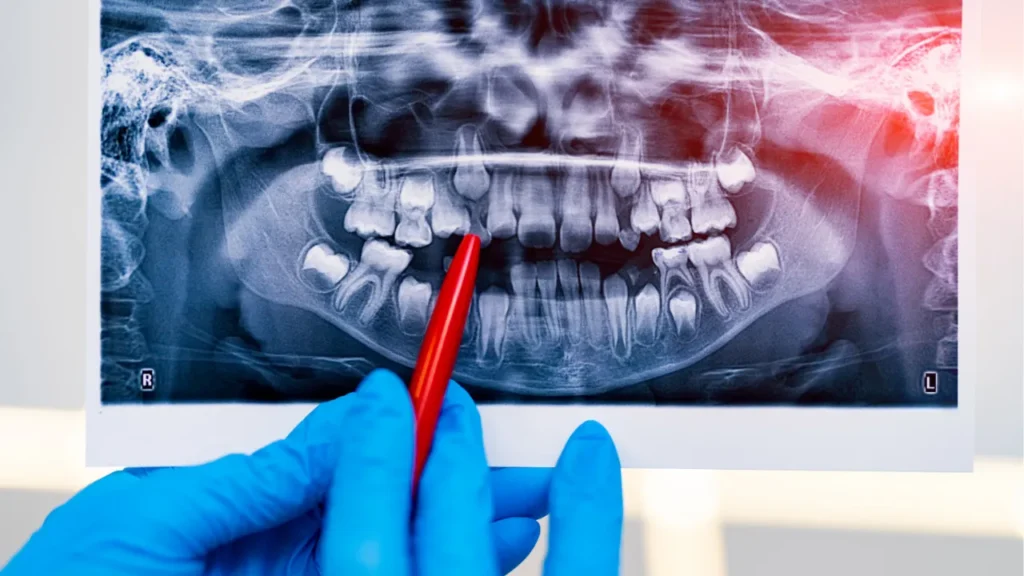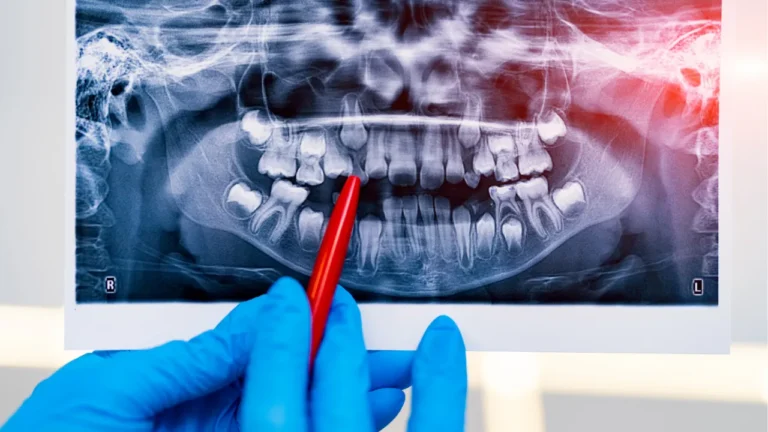Dental X-rays help your dentist see problems that aren’t visible to the naked eye — like cavities between teeth, bone infections, or impacted teeth.
They play a crucial role in early diagnosis and treatment planning, giving your dentist a complete picture of your oral health. Without X-rays, many conditions could go unnoticed until they become painful or more serious.
Quick Summary: Why Dental X-rays Matter
- Detects hidden problems before they become serious
- Allows for accurate treatment planning
- Uses very low levels of radiation, especially with modern digital technology
- Essential for monitoring tooth and jaw development in children
- Helps prevent costly and invasive dental procedures
What Are Dental X-Rays?
Dental X-rays (radiographs) are detailed images of your teeth, jawbone, and surrounding structures, taken with controlled, safe levels of radiation.
They allow your dentist to detect issues that can’t be seen during a standard visual exam.
At Every Smile Dental, we use advanced digital X-ray technology, which produces sharper images while using up to 90% less radiation than traditional film X-rays — and your results are available instantly.
Why Are Dental X-Rays Important?
Even with the best oral hygiene routine, problems can develop beneath the surface of your teeth or gums. X-rays help detect:
- Tooth decay between teeth or under fillings
- Bone loss caused by gum disease
- Abscesses or infections at the root of a tooth
- Impacted wisdom teeth
- Cracks or fractures in teeth
- Cysts, tumours, or other abnormalities in the jaw
- Proper tooth development in children
Early detection through X-rays allows for timely treatment—often preventing the need for more invasive procedures later.
Types of Dental X-Rays
At Every Smile Dental, we use different types of X-rays depending on your needs:
1. Bitewing X-rays
These show the upper and lower back teeth in a single view. They are ideal for spotting cavities between teeth and checking bone levels.
2. Periapical X-rays
These focus on a single tooth, capturing the entire tooth from crown to root, and are helpful for diagnosing root problems or abscesses.
3. Panoramic X-rays
This wide-angle view shows your entire mouth, including the jaw, sinuses, and wisdom teeth. It’s often used for planning orthodontic treatments or assessing jaw disorders.
4. Occlusal X-rays
Used to view the floor or roof of the mouth to detect extra teeth, jaw fractures, or cysts.
Are Dental X-Rays Safe?
Yes—modern dental X-rays are very safe. Digital X-rays use up to 90% less radiation than older film systems, and the amount of exposure is extremely low.
Protective lead aprons and thyroid collars are used as an added precaution, especially for children or pregnant patients.
The benefits of early detection far outweigh the minimal risks associated with occasional X-ray use.
How Often Do You Need Dental X-Rays?
The frequency of dental X-rays depends on your individual health, risk factors, and dental history. In general:
- New patients may need a full set of X-rays to establish a baseline.
- Routine check-ups may require bitewing X-rays once a year.
- Patients with ongoing issues (e.g., gum disease or frequent cavities) may need X-rays more often.
Your dentist will recommend the appropriate schedule based on your oral health needs.
Supporting a Healthier, Longer-Lasting Smile
Dental X-rays are a vital part of comprehensive care. They allow us to make informed decisions about your treatment and catch problems while they’re still small and manageable.
At Every Smile Dental, we use advanced imaging technology to ensure your diagnosis is quick, accurate, and comfortable.







